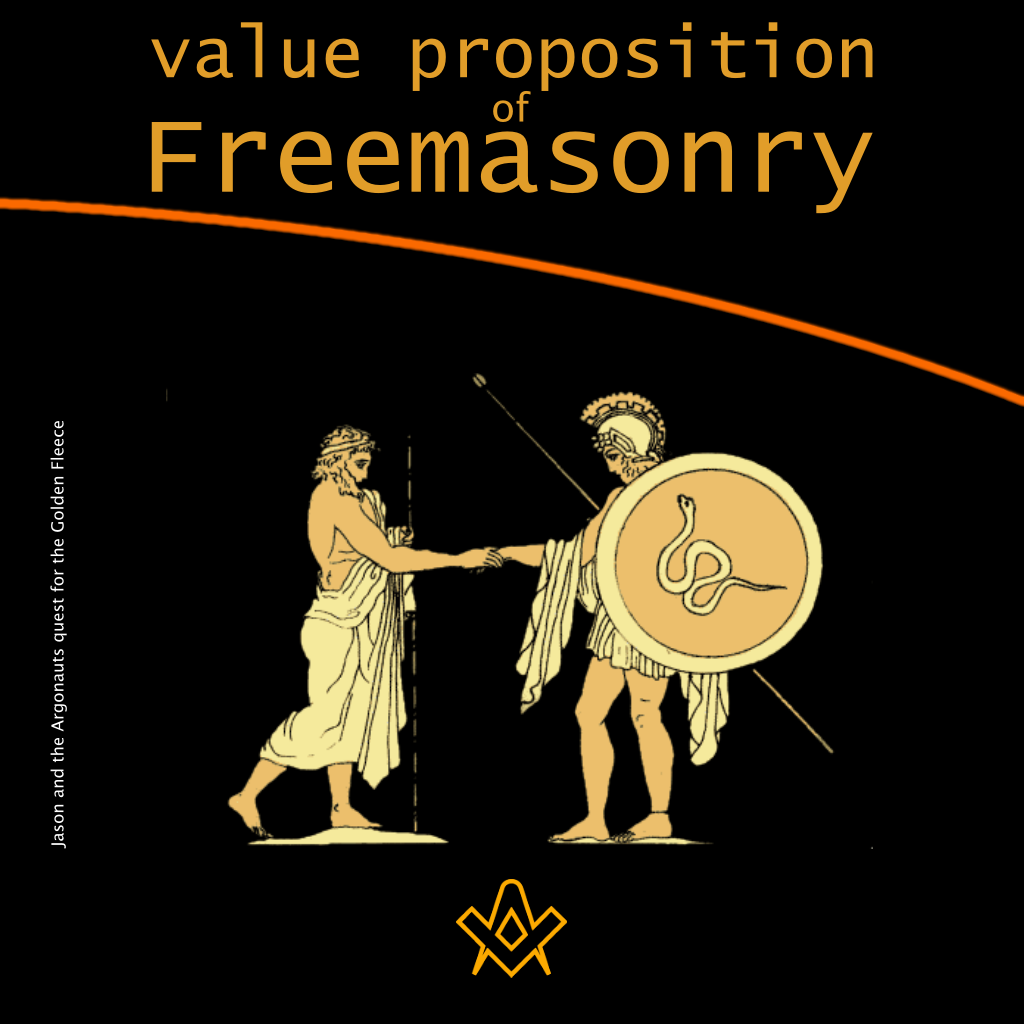In addressing declining lodge membership and lack of attendance, we need to assess the value it offers to members.
What is value, and what does it mean to you? Within Freemasonry, both ancient and modern, there are lessons of great value – what is then needed is the ability to recognise and utilise that vital commodity.
In Kent Henderson’s book Millennial Masonry (Global Masonic Publications, Victoria, Australia, 2002 – currently out of print) there is an article co-authored by John Belton entitled ‘Freemasons — An Endangered Species?’
The article clearly identifies the problem of declining Masonic membership, together with what has been tried to reverse the decline. Unfortunately, ‘Yet throughout the English-speaking Craft, at least, the decline continues unabated…’ (Page 120).
Further, ‘Table 9, Grand Lodge of Alberta — Membership Statistics 1995’, indicates 1996 Masonic membership in Alberta as 9308.
The Proceedings of the Grand Lodge of Alberta for 2020 indicates that the membership as of December 31, 2019, as being 6017, confirming a continued decline, at least in Alberta.
In August of 2019, I purchased and read Dr Jordan Peterson’s book The Twelve Rules for Life: An Antidote to Chaos (Penguin Random House, 16 January 2018).
At that time some three million books had been sold with a list price of $34.95 CND.
Therefore, in theory, $104.8 million CND had been spent in just twenty months to purchase that book.
In August of 2019, I purchased and read Dr Jordan Peterson’s book The Twelve Rules for Life: An Antidote to Chaos (Penguin Random House, 16 January 2018).
At that time some three million books had been sold with a list price of $34.95 CND. Therefore, in theory, $104.8 million CND had been spent in just twenty months to purchase that book.
There is no doubt that whatever currency that is converted to, it is a lot of money. What is surprising, or at least to me, was the title of Peterson’s Rule 1: Stand up Straight with your Shoulders Back!
This is virtually the same as “You are therefore expected to stand perfectly erect with your feet in the form of a Square;” something that Freemasonry has been telling its EAs at least since 1813, some 208 years.
This convergence of ideas showed me two things: first, the lessons of Freemasonry are valuable; and second, Freemasonry has lost its way.
I once suggested, as a Masonic theme, that we should Study the Ritual, Present the Ritual, and Apply the Ritual to Ourselves so that we can become happy, healthy, wealthy and wise.
The premise for this theme was, in my mind, straightforward, as in the Alberta Canadian Rite the words ‘happy’ or ‘happiness’ occur no fewer than thirteen times in the four Craft ceremonies, while there are three passages that relate to health, and, in my mind, numerous passages related to wealth.

Poor Richard’s Almanac’, by Benjamin Franklin (a Freemason) – the phrase ‘early to bed, early to rise makes a man healthy, wealthy and wise’ is illustrated here amongst other ‘rules’ for life.
Lithograph of “Poor Richard illustrated, lessons for the young and old on industry, temperance, frugality &c. by Benjamin Franklin” T.O.H.P. Burnham, Boston, 1887. No known copyright restrictions.
IMAGE LINKED: Library of Congress Digital Collection Attribution 4.0 International (CC BY 4.0)
Wisdom, is knowledge, experience, and good judgement, which should eventually come to all those who continually seek the first, knowledge.
However, within a couple of months of suggesting this theme, I received some push-back regarding the inclusion of the word ‘wealthy’.
There is no doubt that all Freemasons will agree that Freemasonry is based on the apprenticeship system and that any apprentice entering a trade today has the expectation or hope of having a successful career in the trade of their choice.
Most Freemasons would also agree, by extension at least, that these apprentices would also expect to have a somewhat successful life.
I suggest that one cannot have a successful career or a successful life without the inclusion of the concept of financial income and wealth. All this in our fast-changing world.
However, the problems of this fast-changing world, the problems of today, are the same problems as those of 1390, when the Regius Poem was written, and are the same as the problems of 1717, with the formation of the Premier Grand Lodge, and are the same problems of 1813, with the unification of the two Grand Lodges.
These problems are the ability of a man to stand in public and speak clearly, coherently, and succinctly with confidence; the identification and resolution of people-problems in the workplace; and the necessity of having a successful career and a successful life in a fast-changing world.
Resolution to these problems can be found in our Masonic rituals as well, in part, in the Jordan Peterson book — hence the success of his book.
For the EA, FC, MM, to be a continuing member and regular attendee of a Lodge, he must be able to find value in attending.
Unfortunately, in the world today, when time constraints are significant for a young family man, he may not or may feel that he does not have the time to attend a Lodge with apparent limited value to him.
I must confess that it took me ten years to figure out the connection between the EA Degree and the FC Degree.
And, not being too quick on the uptake, it took me a further twenty years to figure out the connection between the FC Degree and the MM Degree.
Discussion or explication of matters such as these can supply true value to Lodge meetings.
The passages within the Ritual that refer to happiness are not difficult to find.
The passages regarding being healthy are less apparent. And the passages regarding becoming and being wealthy are well-hidden, such that clarity took forty years to become apparent to me in some instances.
The senior brethren of the Lodge or an attending Grand Lodge Officer must be able to guide the young Freemason to these less-evident passages so that the young Freemason becomes aware that there is value in continued membership and attendance.
Two examples of items that point to wealth, are these:
The first example is that during the presentation of the EA apron the SW refers to the Golden Fleece.
This reference is included in most Rituals (Emulation, Universal, Craft Guide, Ancient York, Standard Scottish, and Alberta Canadian).
In history, the Golden Fleece comes to us four times.

First; as the bottom of a riffle box in placer gold mining or weighted down with rocks in the bottom of a gold-bearing stream. The gold-laden fleece is then dried in the sun and flipped over and placed on another dry hide and then beaten so the gold dust drops from the fleece to be collected on the dry hide.
Image: A sluice box used in gold mining By USGS – from http://imcg.wr.usgs.gov/usbmak/borehole.html, Public Domain, Credit Wikimedia

Second; in the mythical story of Phrixus, and his twin sister, Helle, who escaped from their stepmother who hand planned to kill them. Phrixus and Helle were rescued by a flying golden ram sent by their natural mother. Helle fell off the ram and drowned, but Phrixus survived all the way to Colchis, where King Aeëtes took him in and treated him kindly, in gratitude, Phrixus gave the king the golden fleece of the ram, (and subsequently the spirit of the ram becomes the constellation Aries) which Aeëtes placed in a consecrated grove, under the care of a sleepless dragon.
Image: By Immanuel Giel 14:24, 9 January 2007 (UTC) – J. C. Andrä: “Griechische Heldensagen für die Jugend bearbeitet”. Berlin: Verlag von Neufeld & Henius, 1902, Public Domain, Credit: Wikimedia.

Third; is the tale of Jason and his crew of Argonauts, who set out on a quest for the fleece by order of King Pelias, in order to place Jason rightfully on the throne of lolcus in Thessally. Jason and the Argonauts eventually acquire the Golden Fleece.
Image: Pelias sends forth Jason, in an 1879 illustration from Stories from the Greek Tragedians by Alfred Church. Credit: Wikimedia

Fourth; time is when, during the marriage of the Duke of Burgundy to Princess Infantana Isabella of Portugal in 1430, the duke created the Order of the Golden Fleece to celebrate the occasion. The things to note about the Order of the Golden Fleece is its moto Pretium Laborum Non Vile which translates to ‘No Mean Reward for Labours’, or ‘Wealth Not Servile Labour’. The list of current members of the Order of the Golden Fleece includes most of the heads of the European Royal Families, including Queen Elizabeth II.
Image: Insignia of a Knight of the Order of the Golden Fleece of Spain. By Presidentfranciscop – Credit: Wikimedia
I did not really understand the complete significance of the Golden Fleece until I read Thomas Piketty’s Capital in the Twenty-First Century (The Belknap Press of Harvard University Press, 2014). Essentially, wealth provides a return of about 4.5% per annum since time immemorial, with the economic and population growth of countries until the 1700s about 0.2%. Those who had wealth became wealthier.
From 1700 to 1970, the economic and population growth of countries steadily grew from 0.2% to 6.0%.
It was during this time that there was a great expansion of the middle class and the upper class with grand mansions suffering under financial constraints, those mansions became museums open to the public.
The economic and population growth of countries has since dropped to 2.0% to 3.0% per annum.
Two notable exceptions are India and China: when they embraced the private enterprise system their economic growth was significant enough to lift millions out of poverty.
The message of the Golden Fleece, in my mind, is that one should have some annual income from wealth — if you do not have wealth, then be frugal and save until you do.
The second example of wealth in ritual is the symbolism on the apron of the visiting Grand Lodge Officer.
The heritage of the regalia of the Grand Lodge of Alberta descends from the United Grand Lodge of England, although from time-to-time motions are made (in my mind, misguided) to make ‘improvements’ to this regalia.
The specific symbolism that is of particular interest is the seven-eared wheat that adorns some Grand Lodge Officers’ aprons.
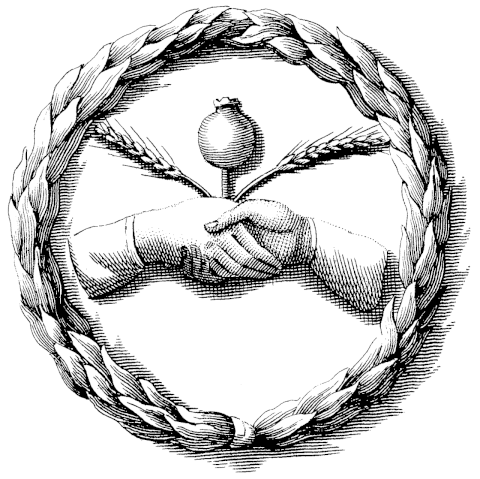
The seven-eared wheat comes from the book of Genesis Chapter 41 and the story of Joseph and his coat of many colours, abandoned in a well by his siblings, rescued and sold into slavery in Egypt.
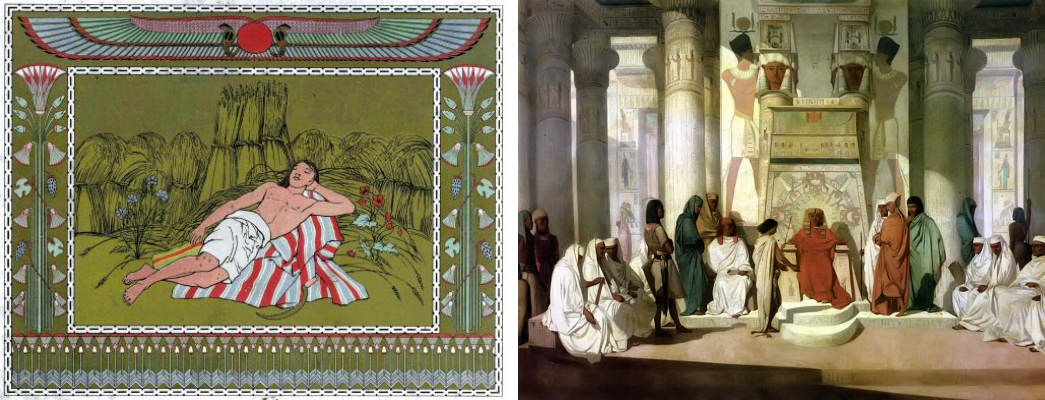
left: For behold we were binding sheaves in the field, and, lo, my sheaf arose, and also stood upright; and, behold, your sheaves stood round about, and made obeisance to my sheaf. Genesis, C. XXXVII. V. 7. Illustration by Owen Jones from “The History of Joseph and His Brethren” (Day & Son, 1869) Public Domain.
Right: Joseph Interprets the Dream of Pharaoh (19th-century painting by Jean-Adrien Guignet)
IMAGE LINKED: wikimedia Attribution 4.0 International (CC BY 4.0)
Joseph eventually interprets the Pharaoh’s dreams: seven fat cows followed by seven lean cows; and seven-eared wheat growing strong with kernels being full and plentiful followed by the seven-eared wheat growing weakly, withering, and dying.
Joseph interprets the two dreams as being the same — there will be seven years of plenty followed by seven years of famine. Joseph then tells Pharaoh to build granaries and store one fifth of the crop for each of the seven years of plenty so that there would be grain available during the seven years of famine.
The message of the seven-eared wheat is that you need to save 20% of gross annual salary and invest it in some financial instrument (not GIC’s) for each of the seven years, to result in having 1.4 times your gross salary readily available for an emergency such as floods, fire, tornadoes, earthquakes, pandemics, and changes in governments or changes in government policies.
If the EA, FC, or MM find value in the lessons of Freemasonry and in being happy, healthy, and wealthy then they will be far more likely to become a continuing member and regular attendee at your Lodge.
Article by: Chris E. Batty
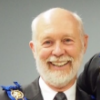
Chris E. Batty was born in the spring of 1945 in Tunbridge Wells, Kent, UK.
He immigrated to Canada early in 1965 with just $45 in his pocket and very little education.
Chris’s interest in Freemasonry stems from his father, who was a member of Bostall Heath Lodge No. 4492, English Constitution.
He has been a Freemason since 1975, served as Worshipful Master of Saskatchewan Lodge No. 92 GRA for the Masonic Year 1982; appointed the Grand Pursivant for the Masonic Year 2001 – 2002; elected as the District Deputy Grand Master for the Northern Lights District for the year 2005 – 2006.
Elected to the Masonic Higher Education Bursary Committee in 2006 and served as the Chairman from 2007 to 2014.
Elected Junior Grand Warden in 2012, and served as SGW, DGM, and the Grand Master for the year 2015 – 2016.
He was appointed as an Honorary Past Grand Master of the Grand Lodge of Saskatchewan in 2015.
And subsequently, an Honorary Grand Master of the Grand Lodge of Manitoba in 2017.

12 Rules for Life: An Antidote to Chaos
By: Jordan B. Peterson (Author)
What are the most valuable things that everyone should know?
Acclaimed clinical psychologist Jordan Peterson has influenced the modern understanding of personality, and now he has become one of the world’s most popular public thinkers, with his lectures on topics from the Bible to romantic relationships to mythology drawing tens of millions of viewers.
In an era of unprecedented change and polarizing politics, his frank and refreshing message about the value of individual responsibility and ancient wisdom has resonated around the world.
In this book, he provides twelve profound and practical principles for how to live a meaningful life, from setting your house in order before criticising others to comparing yourself to who you were yesterday, not someone else today.
Happiness is a pointless goal, he shows us. Instead we must search for meaning, not for its own sake, but as a defence against the suffering that is intrinsic to our existence.
Drawing on vivid examples from the author’s clinical practice and personal life, cutting edge psychology and philosophy, and lessons from humanity’s oldest myths and stories, 12 Rules for Life offers a deeply rewarding antidote to the chaos in our lives: eternal truths applied to our modern problems.

Capital in the Twenty-First Century
By: Thomas Piketty (Author) Arthur Goldhammer (Translator)
What are the grand dynamics that drive the accumulation and distribution of capital? Questions about the long-term evolution of inequality, the concentration of wealth, and the prospects for economic growth lie at the heart of political economy.
But satisfactory answers have been hard to find for lack of adequate data and clear guiding theories.
In Capital in the Twenty-First Century, Thomas Piketty analyzes a unique collection of data from twenty countries, ranging as far back as the eighteenth century, to uncover key economic and social patterns.
His findings will transform debate and set the agenda for the next generation of thought about wealth and inequality.
Piketty shows that modern economic growth and the diffusion of knowledge have allowed us to avoid inequalities on the apocalyptic scale predicted by Karl Marx.
But we have not modified the deep structures of capital and inequality as much as we thought in the optimistic decades following World War II.
The main driver of inequality―the tendency of returns on capital to exceed the rate of economic growth―today threatens to generate extreme inequalities that stir discontent and undermine democratic values. But economic trends are not acts of God. Political action has curbed dangerous inequalities in the past, Piketty says, and may do so again.
A work of extraordinary ambition, originality, and rigor, Capital in the Twenty-First Century reorients our understanding of economic history and confronts us with sobering lessons for today.
Recent Articles: by Chris Batty
 The Alberta Masonic Higher Education Bursary Fund is to help the next generation of Albertans, our children and grandchildren, to obtain the education they need to lead successful lives and contribute to the welfare of mankind. As you can see from this little lesson of our history, education is truly a Masonic obligation. |
 What is leadership and who does freemasonry help develop those skills needed to be a better leader |
 Value Proposition of Freemasonry In addressing declining lodge membership and lack of attendance, we need to assess the value it offers to members. What is value, and what does it mean to you? |
 The Cable Tow: Its Origins, Symbolism, & Significance for Freemasons - Unbinding the significance of the cable tow. |
Recent Articles: membership
 A Rose by any other Name may not be the same Explore the profound distinctions between conferred and transmitted Masonic degrees with Bro. Scott Wisdahl. Delve into how presentation quality, personal impact, and setting shape these rituals, and consider the potential for digital adaptations in modern Masonic practices. Join the discussion on enhancing the Masonic journey and preserving its essence. |
 Progression through the Degrees; a Rite or a Privilege? Exploring the layered journey of Freemasonry, Matt DA Fletcher probes the essence of progression—whether it's a mere rite or a privileged path. Delve into a nuanced perspective where every degree is not just a milestone but a fraction of a grander continuum. |
 Quantity vs Quality within the world of Freemasonry Dive into the compelling debate of quantity vs quality within the world of Freemasonry. Discover the transformative focus on attracting members aligned with the institution's values, promising not only growth but quality growth. High-value individuals assure sustainable development with their commitment to serving the brotherhood. |
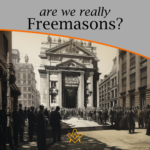 Maybe Freemasonry has opened its doors too wide. Perhaps some have not understood that the survival of Freemasonry in order to achieve its sublime purpose lies not in the number of members it has, but in their quality. Maybe we need less members and more Freemasons. Less men in Freemasonry and more Freemasonry in men. |
 What is ritual and why is it important? P1 Delve into the profound world of Freemasonry rituals and their significance. This insightful piece unravels the underlying importance of rituals, their impact on participants, and the transformative power they hold. Uncover why these centuries-old traditions remain integral to Masonic practice today. |
 Could Freemasonry be helpful for young men? Unravel the Masonic Brotherhood: Could Freemasonry be the antidote to modernity's challenges for young men? Dive in as we explore the Masonic world, its principles, camaraderie, and how its traditional rituals could help forge stronger identities in an increasingly complex world. |
 Discover the remarkable benefits of Lodge Meetings on your well-being. From fostering connections to combating stress, learn how these male-oriented gatherings offer an antidote to anger, hunger, isolation, and exhaustion. Dive into the power of shared experiences, understanding, and camaraderie. Your key to improved mental health awaits inside. |
 Tutorial for a Worshipful Master Unlock the Secrets to Leadership Mastery in our Worshipful Master's Tutorial! Brother Antonio Biella shares step-by-step guidance for Masonic Lodge leaders on honing their roles, duties, and future vision. Discover how to drive growth and engagement in your Lodge, setting ambitious goals and inspiring member participation. |
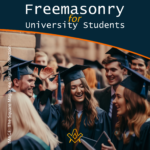 Freemasonry for University Students What are social skillset challenges facing students when they graduate from university ? |
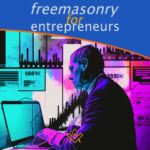 How the Core Values of Freemasonry; Brotherly Love, Relief and Truth Can Be Applied to Improve Productivity For Entrepreneurs |
 Why I became a Freemason: a personal journey of self-improvement Salik Tariq shares his reasons for becoming a Freemason – a journey of self-improvement, finding a community, and personal growth. |
 Freemasonry: Coming out of the Cloisters This paper examines the fundamental tensions on the lines of religion, gender and political ideology that exist in some jurisdictions of Freemasonry. It is on the first of these, religion, on which he makes an initial and exploratory focus. - by Gerald Reilly |
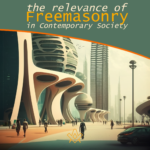 The Relevance of Freemasonry in Contemporary Society The role of Freemasonry in contemporary society is an indispensable one. Despite the challenges and misconceptions it faces, the organization remains steadfast in its humanitarian pursuits and commitment to personal growth and self-betterment. Through its efforts to evolve and adapt to the changing needs of its members and the world, Freemasonry continues to be a vital force in shaping a better future for all. |
 Has Freemasonry managed to revive and thrive after the darkness of the Pandemic? Robert Lomas gives us some (promising) insights. |
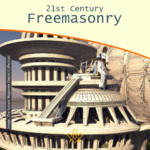 21st Century Freemasonry – a Sign of the Times? A recent article in The Times of London highlighted the dilemma 21st Freemasonry is facing. In this article one Master Mason shares his views of the strengths, and the challenges of modern Masonry. |
 A concept that is both based on our Freemasonic rituals and what we understand as teamwork. This article by Chris Batty examines why teamwork in the lodge is the network that binds us. |
 Lebanese Freemasonry has been both witness to and sometimes participants in turbulent events and forces, which shaped and influenced their world. |
 Is a Masonic Tradition Necessary? Dealing with Masonic tradition is a complex subject that requires careful analysis in order to reach a balanced point on the best etymological definition and the set of discourses and practices, which often end up being presented as such, without, however, presenting bases that support them, often serving only as a discourse that restricts and controls the masses. Fernando Rodrigues de Souza debates this complex subject. |
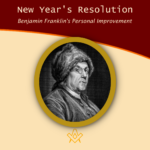 New Year's Resolution with Benjamin Franklin's Personal Improvement Are you ready for a new year's resolution challenge ? To accomplish his life’s goals, at 25 ( around 290 years ago ), Benjamin Franklin developed and committed himself to a personal improvement program that consisted of 13 virtues. You are invited to join me in practicing his daily routine for 2023. |
 The Alberta Masonic Higher Education Bursary Fund is to help the next generation of Albertans, our children and grandchildren, to obtain the education they need to lead successful lives and contribute to the welfare of mankind. As you can see from this little lesson of our history, education is truly a Masonic obligation. |
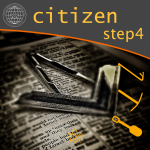 To be a Better Citizen of the World: Step 4 A value proposition for Pure Ancient Masonry as defined in terms of Citizenship; the allegories, symbolism and lessons are a blueprint for all Freemasons to be a better citizen of the world. |
 To be a Better Citizen of the World; Step 3 A value proposition for Pure Ancient Masonry as defined in terms of Citizenship; the allegories, symbolism and lessons are a blueprint for all Freemasons to be a better citizen of the world. |
 In connection with recent article about Freemasonry in the metaverse, we look at how an Egregore applies to Freemasonry in a digital world |
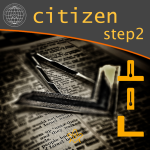 To be a Better Citizen of the World; Step 2 A value proposition for Pure Ancient Masonry as defined in terms of Citizenship; the allegories, symbolism and lessons are a blueprint for all Freemasons to be a better citizen of the world. |
 There are many brotherhoods in the world, and Freemasonry is one of the most significant and successful of them all. This article will be the focus two questions: the importance of brotherhood ? and is there room for improvement in Freemasonry? |
 Intergenerational relations in Masonry: challenges and possibilities Backed with scientific research, Professor Luiz Neto and Professor Alexandre Braune investigate the Intergenerational relations in Freemasonry and explores the challenges and opportunities. |
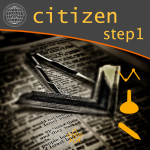 To be a Better Citizen of the World; Step 1 A value proposition for Pure Ancient Masonry as defined in terms of Citizenship; the allegories, symbolism and lessons are a blueprint for all Freemasons to be a better citizen of the world. |
 The Masonic Temple is a platform where both Freemasons and non-Masons, enthusiasts of real art and spiritual growth, connect to the new world of the metaverse. A Freemasonry in the metaverse project, based regular freemasonry principles. |
 Opportunity to fix the Sussex fudge Is there a value proposition for members, that under English Constitution Freemasonry, we have a 4 part offering; Entered Apprentice, Fellowcraft , Master Mason and Companion, conducted in a single craft lodge ? |
 Value Proposition of Freemasonry In addressing declining lodge membership and lack of attendance, we need to assess the value it offers to members. What is value, and what does it mean to you? |
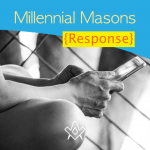 What is a 'Millennial' and what do they want from Freemasonry? You'll be surprised at the answers. |
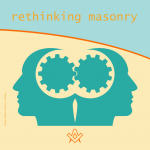 Let us help answer a fundamental question, from a confused newly raised brother asking “What does it all mean and where do I go from here?” |
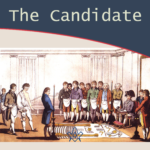 Written in 1930, much of the advice is still relevant today - although some may provoke further thought or debate! |
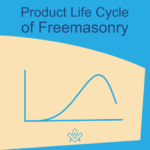 Product Life Cycle of Freemasonry An inconvenient truth about the product life cycle of Freemasonry |
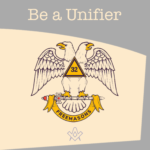 Freemasonry is local. This is where we need to start. We start with our Facebook friends, our neighbours, our colleagues, our lodges… |
 Freemasonry in the time of pandemic The Rule of Six. Localised lockdowns. Second wave? What do we do now?! The answer is simple - engage with members, promote Masonic education and get thinking outside the lodge. |
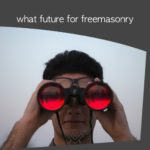 The current functioning of the Masonic movement has some positive aspects and others that are blatantly backward and counterproductive. |
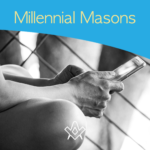 What is a 'Millennial' and what do they want from Freemasonry? You'll be surprised at the answers. |
 How to improve your Lodge Membership Marketing Program. |
 The Anti-Social Impact of Social Media The 'dark side' of social media and its negative effect on our mental health |
 If Freemasonry cannot meet, is this an opportunity to make a change to how we do things? |
 Has your lodge accepted an unknown candidate from the internet? Third in a three-part series looking at the process to accepting candidates via the internet |
 Is the brother of a brother a brother ? Rights to visit - recognition and regularity re-evaluated. |
 The second article in the Unknown Candidate series - Outlining the social media marketing process to attract the unknown candidate to make that first enquiry |
 Ask a random Freemason the purpose of Freemasonry and the likely response will be to “make good men, better”. Research undertaken by James Justin Davis Pennsylvania Academy of Masonic Knowledge. |
 Has your lodge accepted an unknown candidate from the internet? First in a three-part series looking at the process to accepting candidates via the internet |
 Mental Health - Raising its awareness and how we as Freemasons throughout the entire UK can help our fellow brethren and their families when they need it. |
 Share one thought why freemasonry is relevant today - Open question posted on Facebook with a very wide range of responses from Brethren across the globe |
 The Tipping Point of Freemasonry Why do brothers lose interest in Freemasonry and what can we do to get that spark back? At what moment did our own thoughts begin to waver? |
masonic knowledge
to be a better citizen of the world
share the square with two brothers

click image to open email app on mobile device



